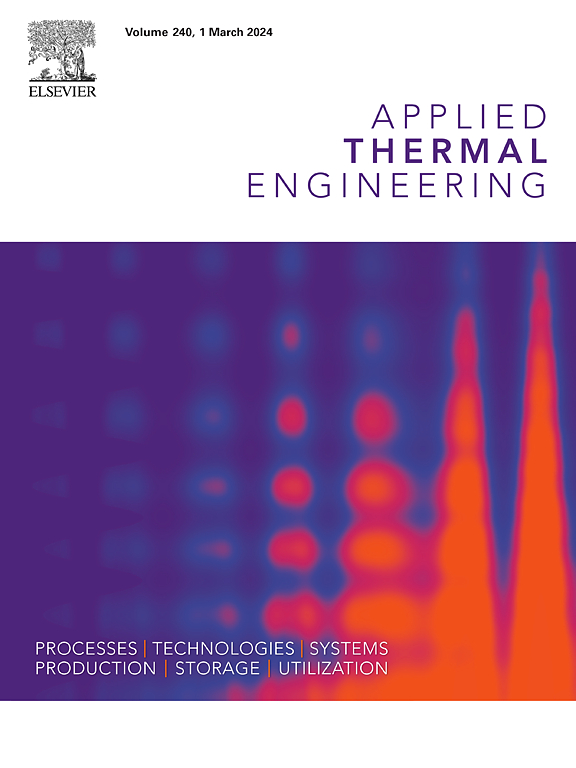Impact of dual-fracture location on heat extraction from Enhanced geothermal system in low-permeability reservoirs
IF 6.9
2区 工程技术
Q2 ENERGY & FUELS
引用次数: 0
Abstract
As environmental and economic issues exacerbated by traditional fossil fuels intensify, Dry Hot Rock geothermal energy has garnered significant attention due to its immense potential. Current research predominantly focuses on the heat extraction effectiveness in complex fractures within Enhanced Geothermal Systems, with relatively less emphasis on fluid behavior between large fractures. This study employs finite element software to establish a multi-horizontal well model in a low permeability reservoir (5 × 10-17 m2), analyzing the impact of different spatial configurations of two fractures on fluid flow, heat transfer, and heat extraction efficiency. The results indicate that fractures are the primary channels for fluid flow in low permeability reservoirs. Optimal heat extraction occurs when fractures are parallel, spaced 100 m apart, and perpendicular to the horizontal well, with significant threshold effects of fracture spacing and angle on temperature distribution. The highest heat extraction is achieved at a 37° intersection angle of fractures at the production well. Over a 60-year production period, reservoir extraction degrees for parallel or intersecting fractures range from 8 % to 15 %, while that for fracture communication between injection and production well horizontal segments is only 1.91 % to 3.01 %. Under the optimal injection scenario, cumulative 60-year heat production for parallel, intersecting, and communicating fractures is 2.13 × 1018J, 2.20 × 1018J, and 2.22 × 1018J, respectively, with the best heat extraction efficiency when fractures communicate. Additionally, under constant flow rate and inlet temperature, outlet temperature and system thermal power show near-linear declines, while reservoir extraction degree rises linearly. This study provides crucial theoretical support and practical guidance for the efficient extraction of geothermal energy.
双压裂位置对低渗透储层强化地热系统热量提取的影响
随着传统化石燃料引发的环境和经济问题日益严重,干热岩地热能源因其巨大的潜力而备受关注。目前的研究主要集中在增强型地热系统中复杂裂缝的热量提取效果,而对大型裂缝间流体行为的研究相对较少。本研究采用有限元软件在低渗透储层(5 × 10-17 m2)中建立多水平井模型,分析两条裂缝的不同空间配置对流体流动、热传递和热提取效率的影响。结果表明,在低渗透储层中,裂缝是流体流动的主要通道。当裂缝平行、间距 100 米且垂直于水平井时,热量提取效果最佳,裂缝间距和角度对温度分布有显著的阈值效应。生产井处的裂缝交角为 37°时,热萃取率最高。在 60 年的生产期内,平行或相交裂缝的储层萃取率为 8 % 至 15 %,而注入井和生产井水平段之间的裂缝沟通萃取率仅为 1.91 % 至 3.01 %。在最佳注入方案下,平行、相交和沟通裂缝的 60 年累计产热量分别为 2.13 × 1018J、2.20 × 1018J 和 2.22 × 1018J,其中沟通裂缝的采热效率最高。此外,在流量和入口温度恒定的情况下,出口温度和系统热功率呈近似线性下降,而储层提取度呈线性上升。这项研究为高效提取地热能提供了重要的理论支持和实践指导。
本文章由计算机程序翻译,如有差异,请以英文原文为准。
求助全文
约1分钟内获得全文
求助全文
来源期刊

Applied Thermal Engineering
工程技术-工程:机械
CiteScore
11.30
自引率
15.60%
发文量
1474
审稿时长
57 days
期刊介绍:
Applied Thermal Engineering disseminates novel research related to the design, development and demonstration of components, devices, equipment, technologies and systems involving thermal processes for the production, storage, utilization and conservation of energy, with a focus on engineering application.
The journal publishes high-quality and high-impact Original Research Articles, Review Articles, Short Communications and Letters to the Editor on cutting-edge innovations in research, and recent advances or issues of interest to the thermal engineering community.
 求助内容:
求助内容: 应助结果提醒方式:
应助结果提醒方式:


